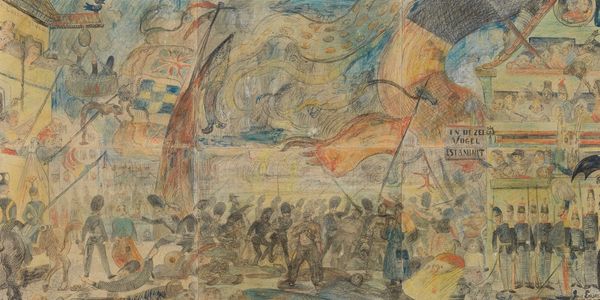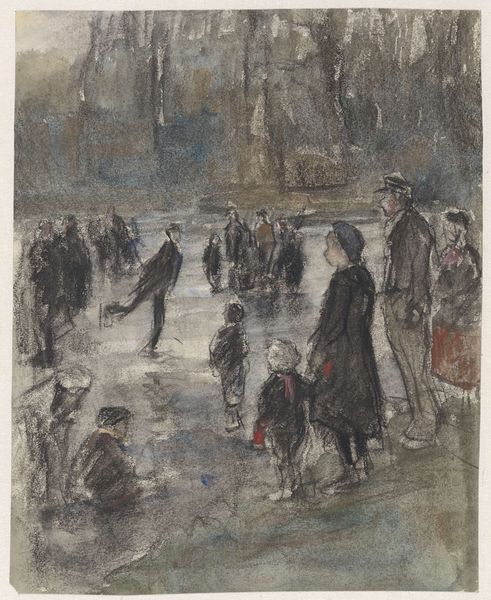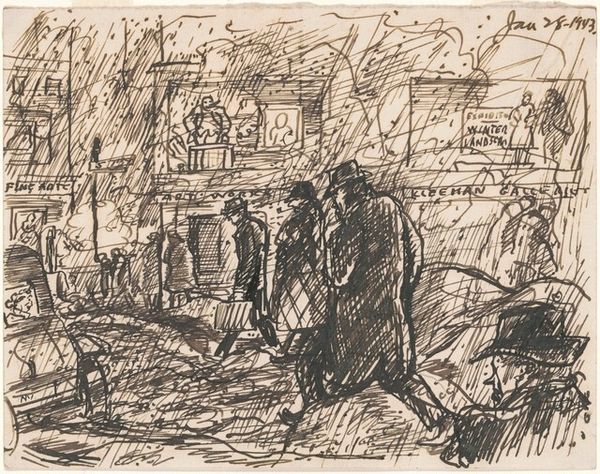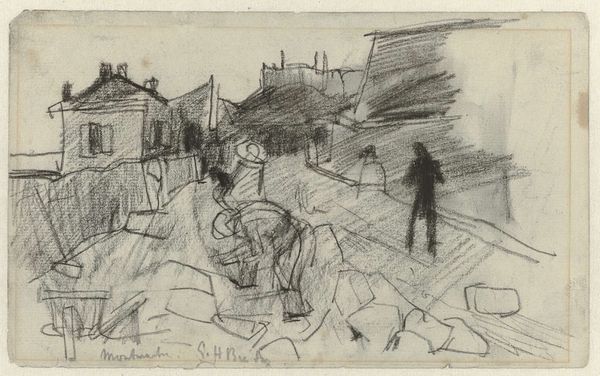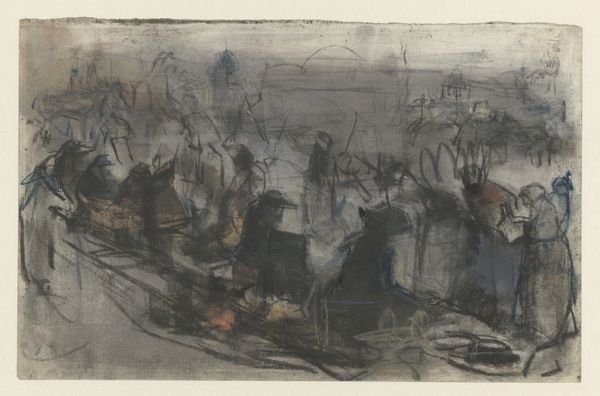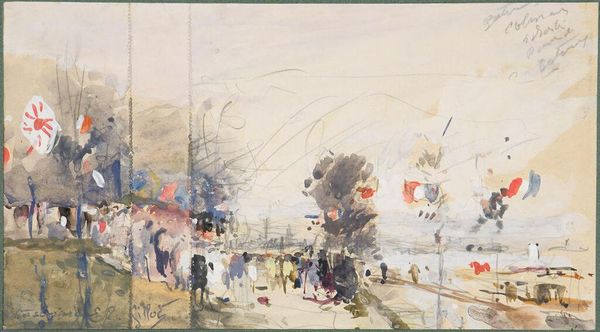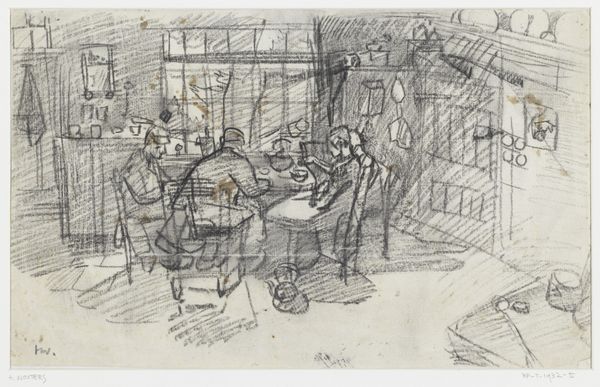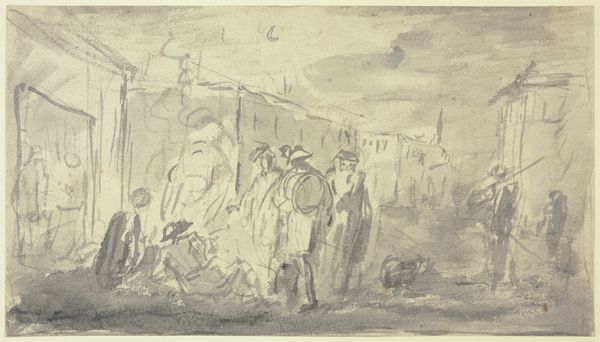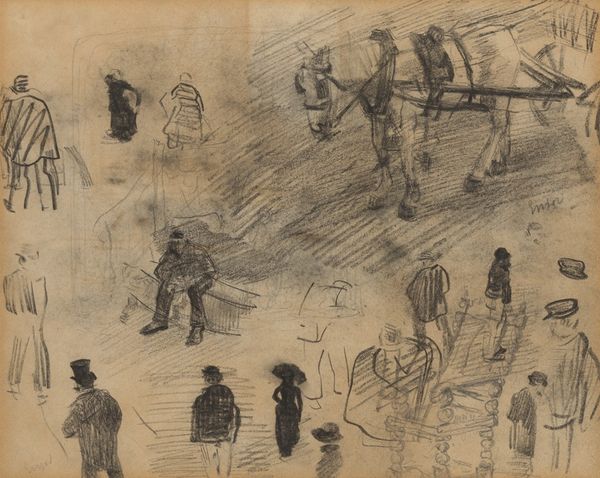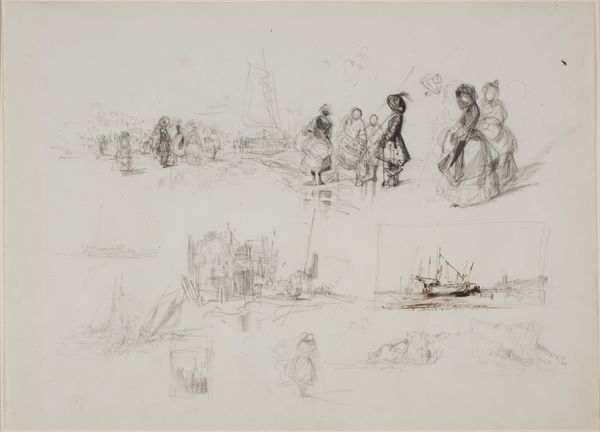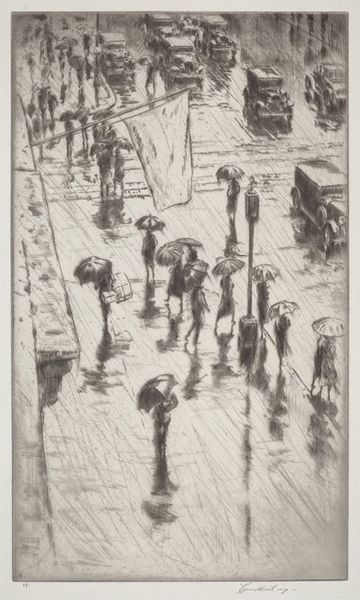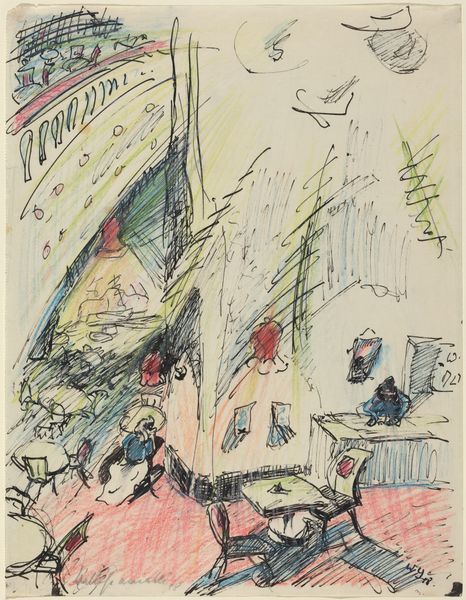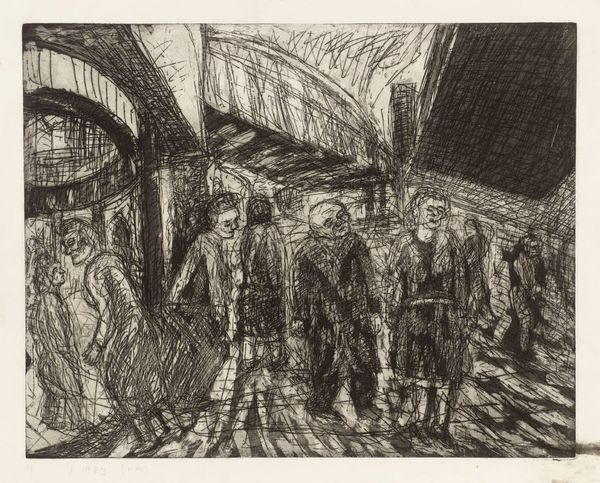
drawing, watercolor
#
drawing
#
narrative-art
#
landscape
#
figuration
#
watercolor
#
expressionism
#
cityscape
#
watercolor
Dimensions: 219 mm (height) x 290 mm (width) (bladmaal)
Curator: A somber and unsettling piece. It feels brutally honest, capturing the raw emotional landscape of grief. Editor: Here we have John Christensen's "Funeral in Winter" from 1928. Rendered in watercolor and drawing, it presents a chilling depiction of a winter cityscape dominated by a funeral procession. Curator: The muted palette immediately sets the tone, reflecting not only the coldness of winter, but also the emotional coldness of loss. The dark figures, almost spectral, feel weighed down by grief and possibly societal constraints on displaying sorrow. Editor: Note how Christensen employs Expressionist techniques. The distorted perspective and somewhat chaotic composition create a sense of unease. He disrupts the expected decorum associated with funerary rites. Consider, for example, the repeated symbols associated with mourning. Does the bundled black clothing act as a social imperative and signifier? Curator: Absolutely, and that’s heightened by the contrast with the occasional splash of muted red. Is that a comment on the hidden, perhaps suppressed, passion and rage within such rituals? Or on other types of sociopolitical statements related to war? The positioning of individuals within the painting suggests hierarchical observations of those permitted to show feelings vs. the labor involved in burying and thus dealing with physical consequences of mortality. Editor: The iconography suggests something complex. This landscape is fraught. Is it an outright condemnation of tradition, or a lament for what's lost amidst the machinery of social expectations and control? Perhaps it explores the duality of grief – a private torment made public. I can also read some figures holding bouquets, perhaps a comment on hope despite these funereal expectations. Curator: Precisely, hope is almost always entwined even at funerals; social gestures of mourning offer their own agency in dark times, though whether they truly disrupt hierarchies, or merely enforce and restate them, is up for debate. What do you make of the choice to focus on watercolor and drawing versus a denser, less permeable medium like oil for such a stark scene? Editor: The fluid, transient nature of watercolor mirrors the fleeting nature of life and the impermanence of earthly existence. I would even suggest it enhances the emotional impact—conveying vulnerability in the face of the inevitable. Curator: An appropriate consideration given its somber weight. Editor: Indeed, this piece seems to be asking how we create rituals and rites for dealing with impermanence.
Comments
No comments
Be the first to comment and join the conversation on the ultimate creative platform.
